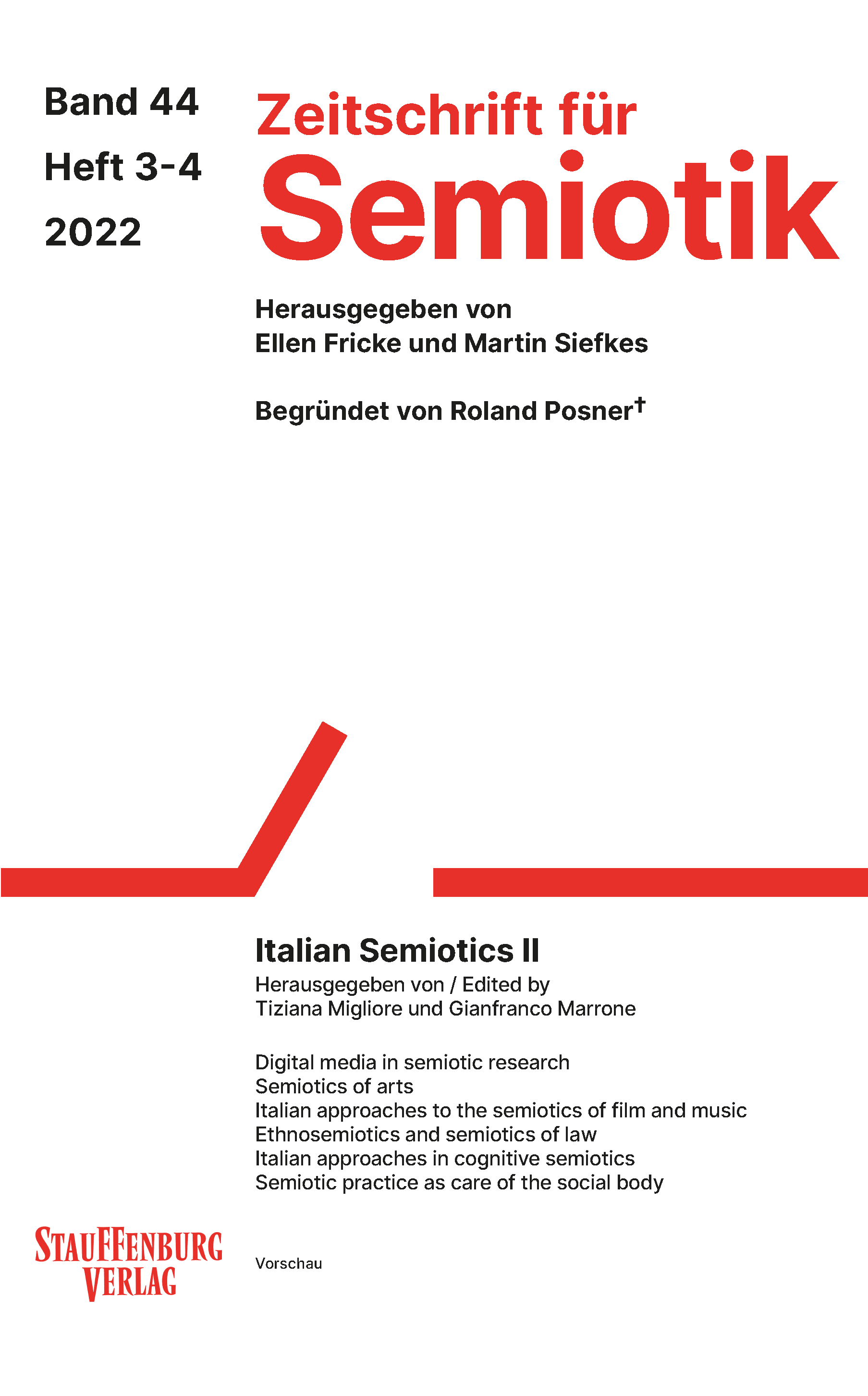Semiotics: The Art of Social Care
DOI:
https://doi.org/10.14464/zsem.v44i3-4.854Keywords:
Semiotics, semeiotics, visible, medicine, careAbstract
One of the main features of Italian semiotics’ identity is its dual paradigm. That is, semiotic studies in Italy are developed from two schools of thought: structuralist and generative (from Europe, especially France) or pragmatic and interpretative (from the United States). This article attempts to explain the reasons for this tradition, which are epistemic and semantic before being political. The two approaches are mutually irreducible but are in continuity with one another: they stem from the need to take into account processes of signification in terms of how they emerge and are articulated within them, but also, subsequently, in terms of how they are interpreted. The reference model is semeiotics, which was originally the only field of study to be called “semiotics” or “semiology” and where research is actually done by connecting the internal relationsbetween certain signs and the manifestation of symptoms in the communicative relationship between patient and doctor. Our hypothesis is that the nexus between semiotics and semeiotics go beyond the similarity in procedures, for the correspondence between the visible and the enunciable (Foucault 1966a; Deleuze 1986). Semiotics too practices an art of care, through the analysis and reading of meaningful processes, which, however, concerns not individual bodies but social corporeity.
Downloads
Published
Issue
Section
License
Copyright (c) 2025 Tiziana Migliore

This work is licensed under a Creative Commons Attribution 4.0 International License.
Copyright for articles published in this journal is retained by the authors. The content is published under a Creative Commons Licence Attribution 4.0 International (CC BY 4.0). This permits use, distribution, and reproduction in any medium, provided the original work is properly cited, and is otherwise in compliance with the licence.


